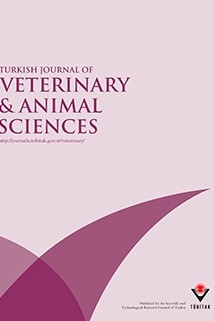
Turkish Journal of Veterinary and Animal Sciences
Yazarlar: Uğur GÜNŞEN
Konular:-
Anahtar Kelimeler:Fresh kashar cheese,Bacteriological quality,AFM1,ELISA
Özet: In the present study, 125 samples of commercially available vacuum packaged fresh kashar cheese randomly collected between October 1999 and December 2000 were analysed for coliform bacteria, Escherichia coli, Salmonella, Staphylococcus aureus, moulds and yeasts and levels of aflatoxin M1 (AFM1). AFM1 levels were determined using ELISA. The mean levels of coliform bacteria, S. aureus, moulds and yeasts and AFM1 were 3.9 x 103, 6.25 x 102, 2.4 x 104 cfu/g and 206.23 ± 15.88 ng/kg, respectively. E. coli was identified in five of the 18 samples (27.8%) positive for coliform bacteria. Salmonella was not isolated from any of these samples. Eighteen of 125 fresh kashar cheese samples (14.4%) exceeded the Turkish kashar limits for coliform bacteria, five of the samples (4%) for E. coli, four of the samples (3.2%) for S. aureus, 80 of the of the samples (64%) for moulds and yeasts and 28 of 86 samples (32.55%) for AFM1.